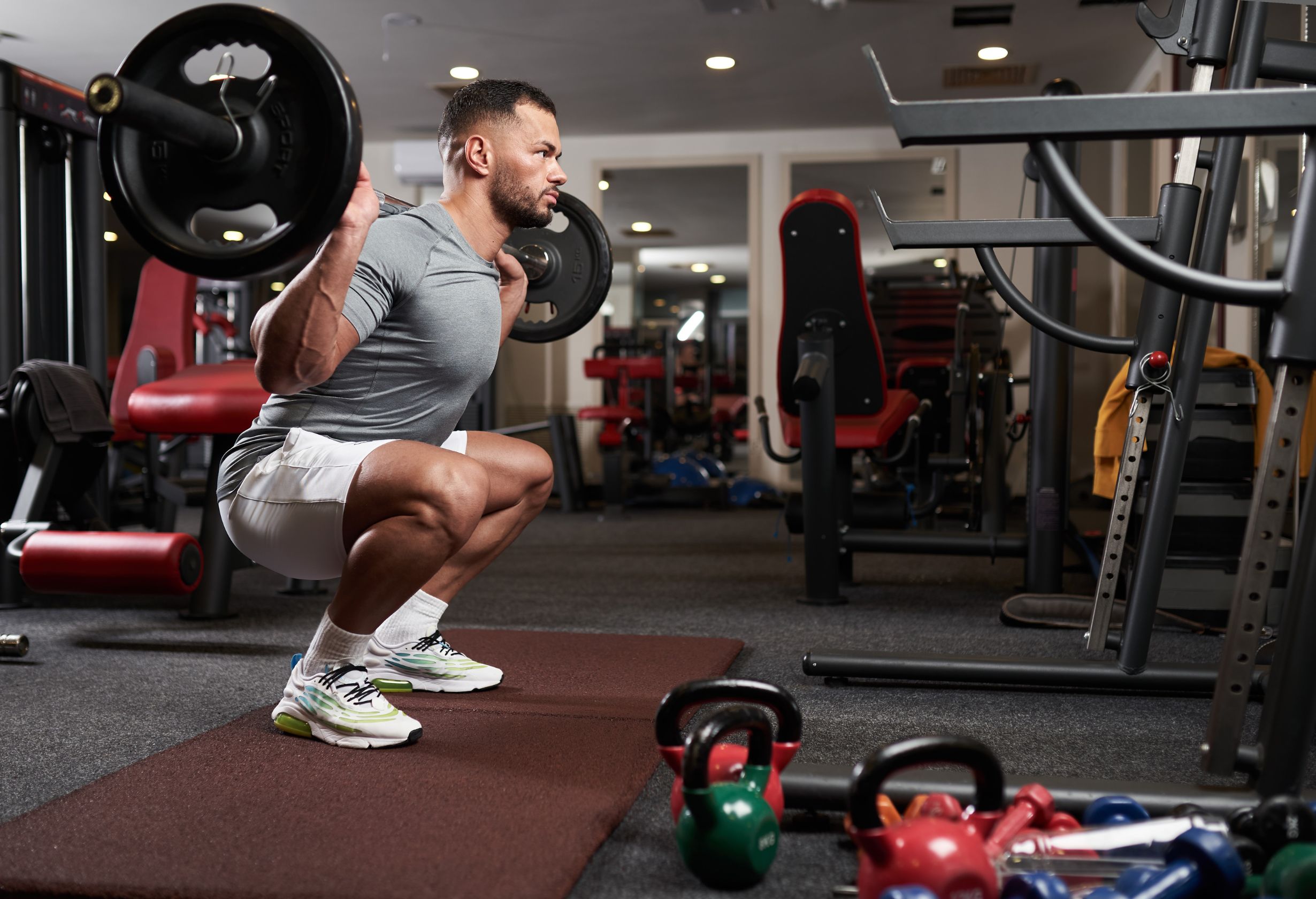Squat Smarter: Mastering the Ideal Range of Motion

Ass to grass? Thighs parallel to the ground or only partial descent? There are several variations for squats. But which Range of Motion (ROM) amplitude is most effective for squats? Studies provide insights:
What is Range of Motion?
The term “Range of Motion” (ROM) describes the extent of movement of a joint or body region during an exercise. In strength training, it refers to the range of motion in which you move a joint during a repetition, from the starting position to the lowest point and back. A greater range of motion means that you stress the trained muscles over their entire length. The right ROM depends on the exercise, your individual goals, and your mobility.
Range of Motion in Squats
In squats, ROM refers to the range of motion through which the knee and hip joints move during the exercise. A full or deep squat is also known as “Ass-to-Grass” (ATG), where the hips descend deeply as if touching grass. This results in maximal knee and hip flexion. Squats where the thighs are parallel to the ground represent the standard form. It’s also possible to perform partial squats without descending the hips as deeply.
Correct Technique in Squats
Before discussing the optimal Range of Motion in squats, it’s important to address technique. Apart from the range of motion, the technique remains consistent: Begin standing upright with feet hip-width apart and knees minimally bent. Then, lower the body by pushing the hips back and bending the knees. The upper body leans slightly forward, maintaining a straight back. From here, you can vary the depth of the squat. The debate revolves around how deep one should go. Should you go all the way down, known in English as “Ass-to-Grass”? Should the thighs be parallel to the ground? Or is a partial squat sufficient?
Most Common Range of Motion in Squats
The most common variation is the parallel squat, preferred by most coaches for their athletes. However, there’s an ongoing debate about whether deeper squats (Ass-to-Grass) might be more effective for optimal muscle growth. After all, a greater range of motion increases time under tension, beneficial for muscle activation. Deep squats are commonly used in Olympic weightlifting and often in CrossFit.
Muscle Groups Trained
All three variations primarily target the gluteal muscles and the anterior and posterior thigh muscles. Less depth allows for heavier weights, but parallel or deep squats result in more effective activation of these muscles. Deep squats are particularly effective for targeting the quadriceps due to the phenomenon of stretch-mediated hypertrophic stimulus, as research has shown. However, deep squats are suitable only for those with adequate flexibility, ensuring proper execution.
Advantages of Deep Squats
Another advantage of deep squats is the enhanced activation of the gluteal muscles (gluteus maximus) and thigh muscles (quadriceps and hamstrings), especially in the lower range of motion (between 90° and 135° knee angle). Studies have demonstrated significantly higher muscle activity in this range, maximizing the hypertrophic stimulus.
Stretch-Mediated Hypertrophic Stimulus
Stretch-mediated hypertrophic stimulus occurs when a muscle works under load during stretching, leading to greater muscle activation and growth.
Joint Health and Injury Prevention
Concerns about deep squats’ impact on knee joints have been addressed in a 2024 study, indicating that while they increase joint pressure, this is not detrimental to healthy knees. Joints adapt and strengthen with proper training. Joint stress during deep squats may even be lower than during parallel or partial squats, especially during the initial phase of the movement (0-30° flexion). A greater range of motion enhances joint stability and mobility, thereby reducing injury risks.
Nervous System and ROM in Squats
Interestingly, deep squats place less strain on the central nervous system compared to partial squats, usually involving lighter weights. This reduces spinal and spinal cord stress. However, correct technique—maintaining a straight back, stable feet, and knees aligned with the toes—is essential to prevent injuries.
Individual Requirements and Mobility
It’s important to note that deep squats aren’t immediately suitable for everyone. They require sufficient hip and ankle mobility and strong back muscles. Those lacking the necessary mobility should work on it before increasing depth. The principle “Range before Load” applies: Master the full range of motion cleanly before adding weight.